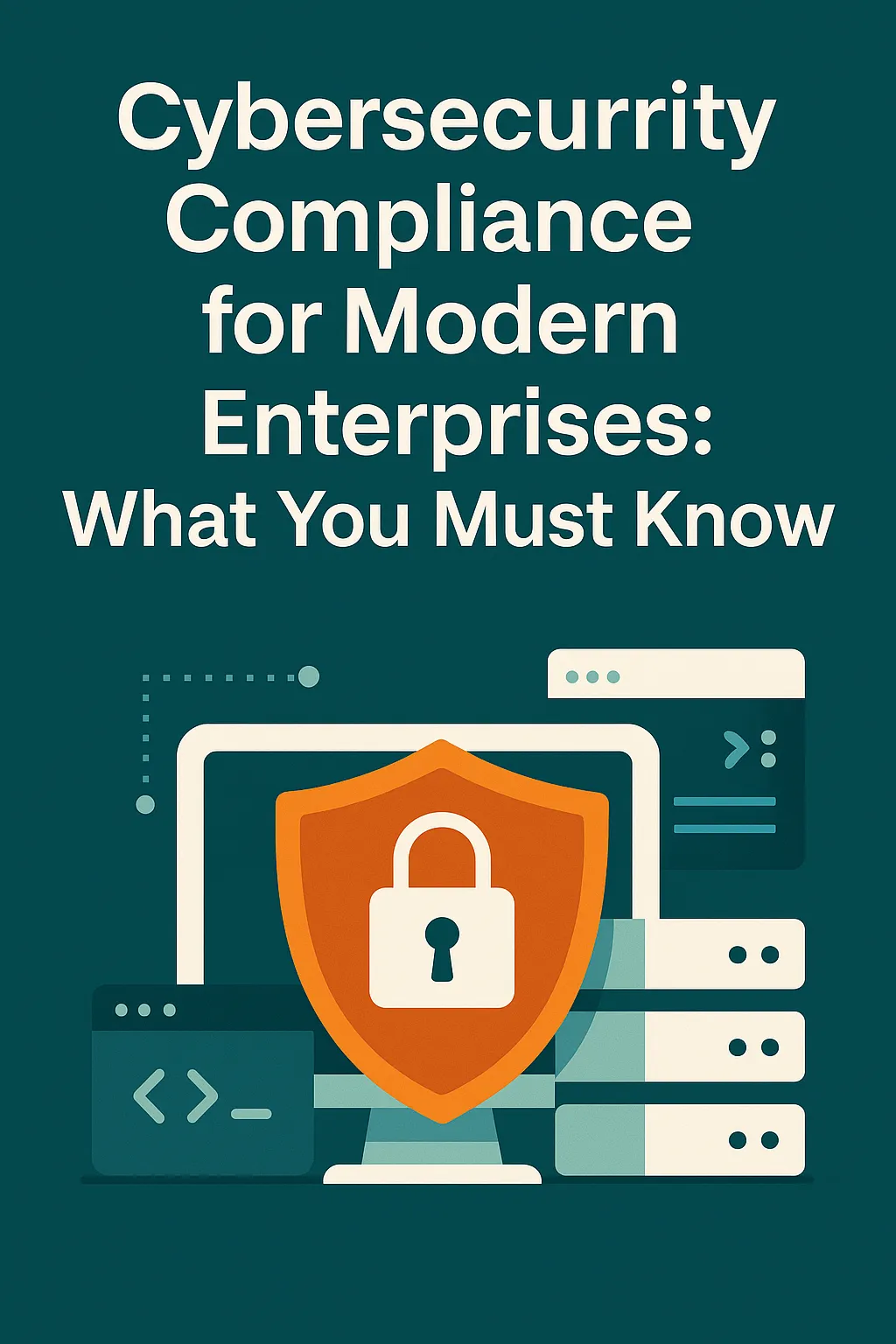Introduction
Cybersecurity is no longer just an IT concern — it’s a core business priority. For modern enterprises, staying compliant with cybersecurity standards and regulations is critical to avoid data breaches, financial losses, and legal penalties. In this article, we explain the essentials of cybersecurity compliance every organization should understand.What is Cybersecurity Compliance?
- Cybersecurity compliance refers to adhering to standards, laws, and practices that protect digital assets, customer data, and IT infrastructure.
- It ensures an organization follows frameworks set by governing bodies and industry standards like ISO, GDPR, HIPAA, or PCI-DSS.
Why Cybersecurity Compliance Matters
- Legal protection: Non-compliance can result in heavy fines and lawsuits.
- Data protection: Ensures customer and internal data is secure.
- Brand reputation: Demonstrates trustworthiness to clients and partners.
- Operational continuity: Prevents cyberattacks that disrupt services.
Common Cybersecurity Compliance Standards
- GDPR (General Data Protection Regulation): Protects personal data of EU citizens.
- HIPAA: Safeguards health information in the healthcare sector.
- PCI-DSS: Governs security for card payment data.
- ISO/IEC 27001: International standard for information security management.
- SOX (Sarbanes-Oxley): Protects corporate data integrity in financial reporting.
Core Elements of Cybersecurity Compliance
- Risk Assessment: Identify vulnerabilities in your systems and data flows.
- Data Classification: Label and prioritize sensitive and critical information.
- Access Controls: Use multi-factor authentication and role-based permissions.
- Incident Response: Develop plans to detect, respond, and recover from breaches.
- Regular Audits: Conduct security audits and assessments to ensure continued compliance.
Challenges Enterprises Face
- Keeping up with evolving regulations
- Managing compliance across multiple departments or regions
- Securing cloud-based infrastructure and remote work setups
- Employee negligence or lack of awareness
Best Practices to Stay Compliant
- Conduct routine training: Educate employees on threats and secure behaviors.
- Update systems regularly: Patch vulnerabilities in software and hardware.
- Maintain documentation: Keep records of policies, audits, and incident reports.
- Use automated compliance tools: Monitor systems and report violations in real time.
- Hire a compliance officer: Designate a point of accountability for security governance.
Conclusion
- Cybersecurity compliance is essential for protecting business assets and customer trust.
- Understanding the relevant standards and implementing best practices ensures smoother operations, fewer disruptions, and better credibility.
- Enterprises that invest in compliance are better positioned to thrive in a digital-first world.
